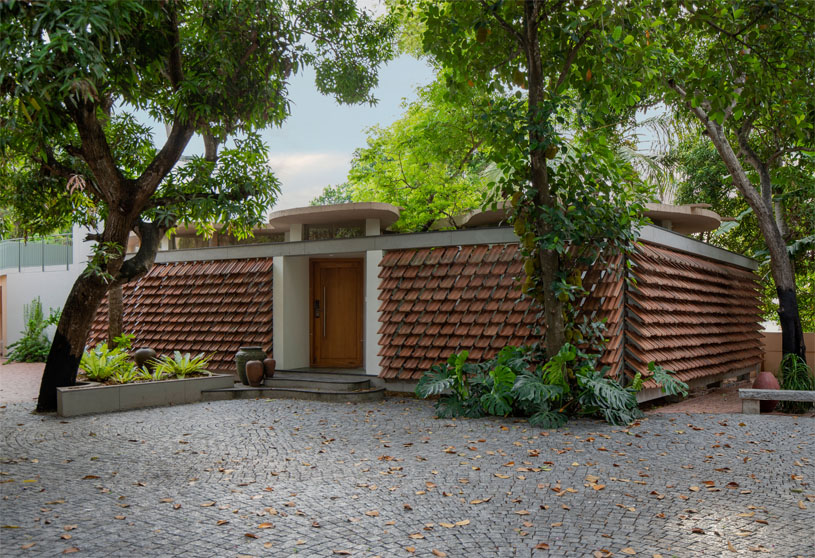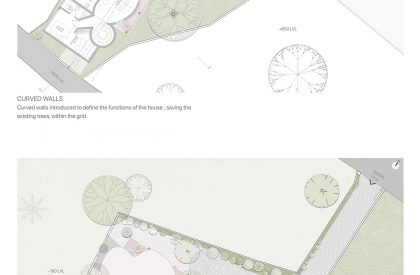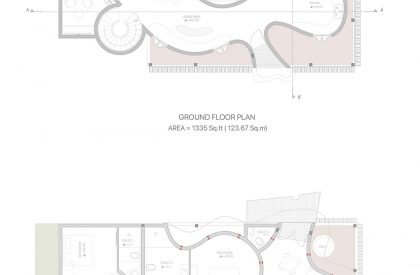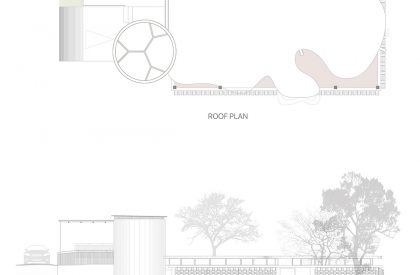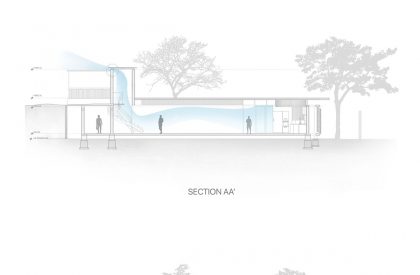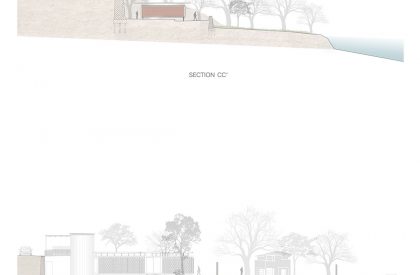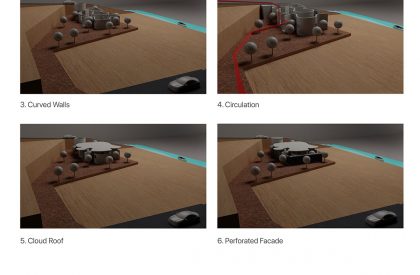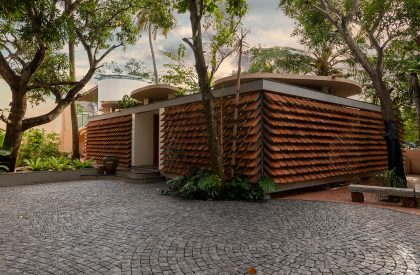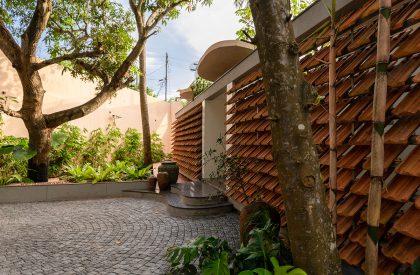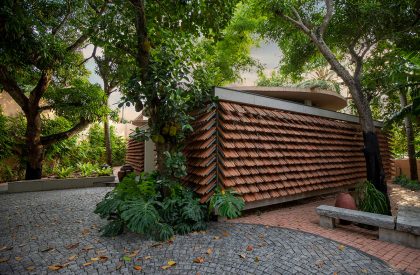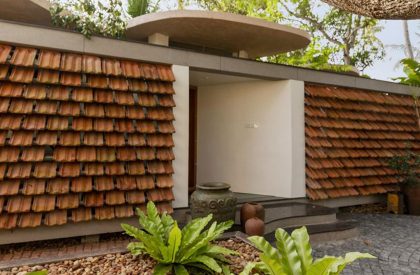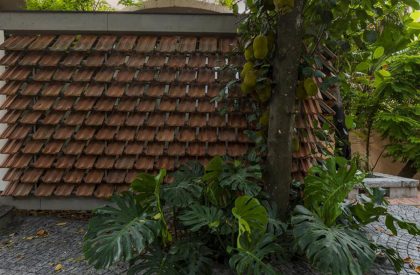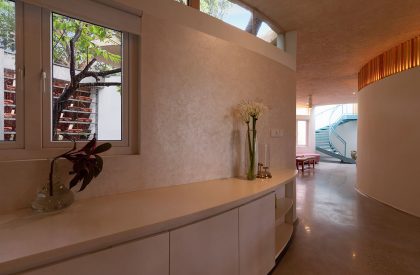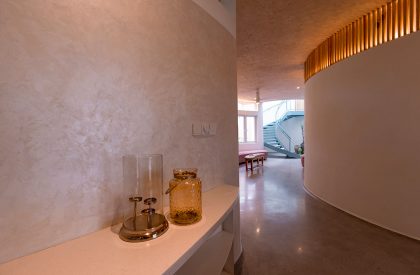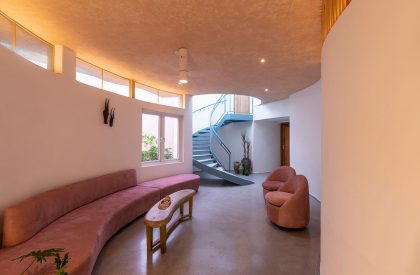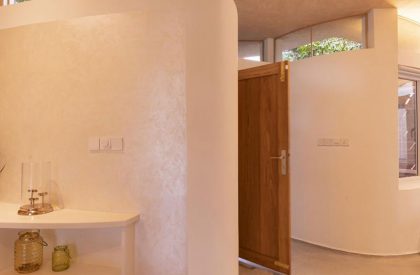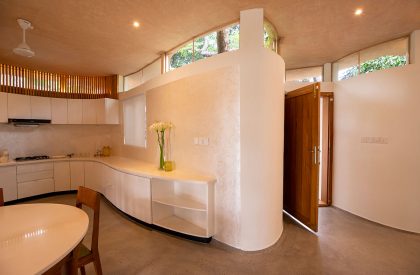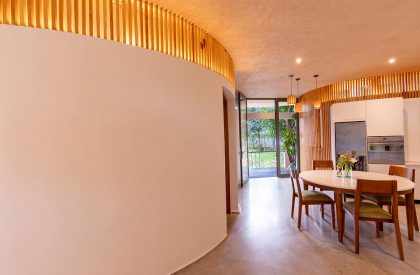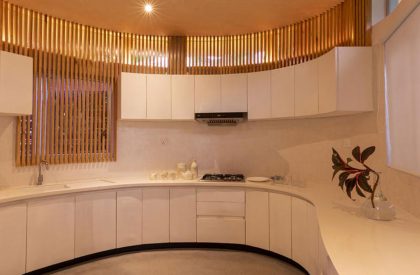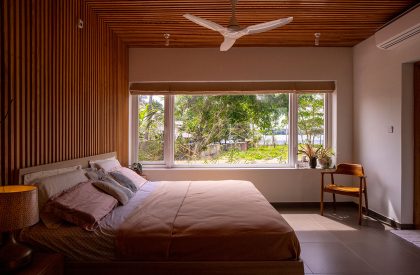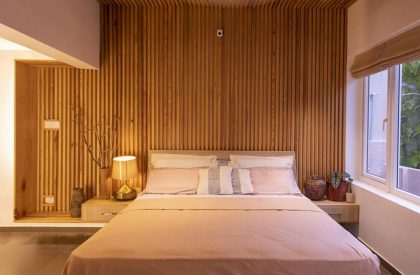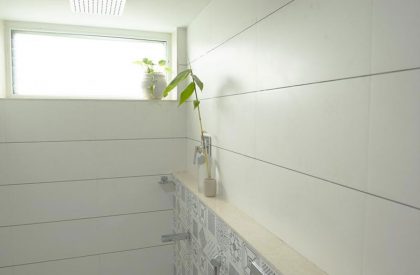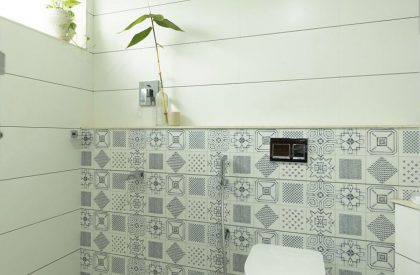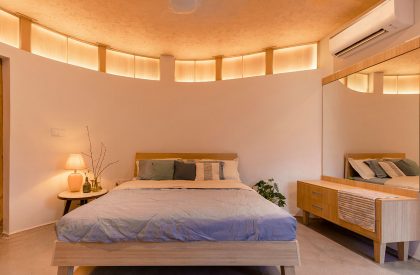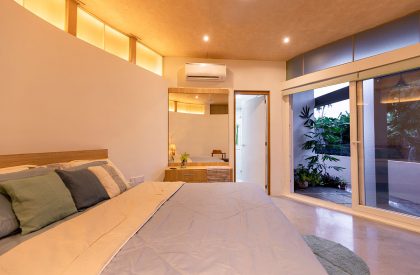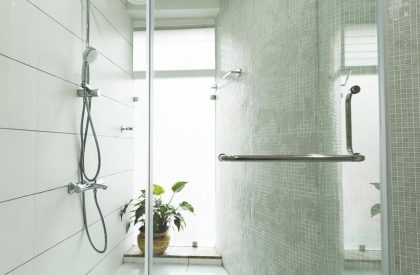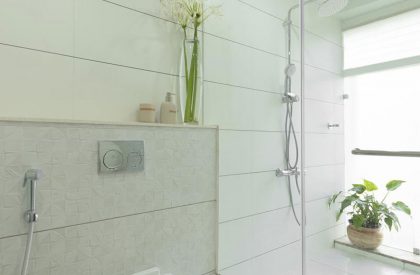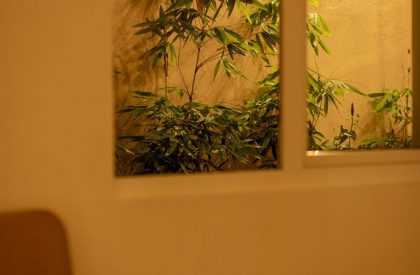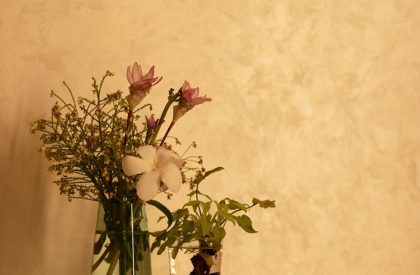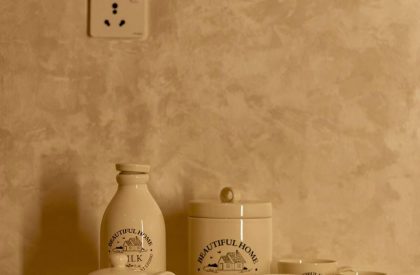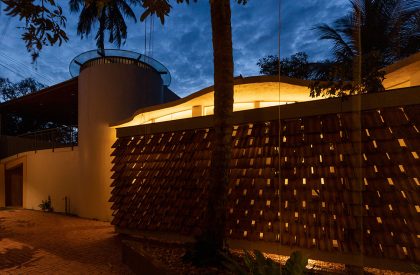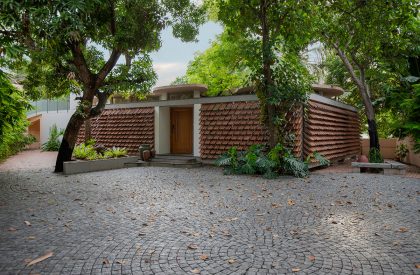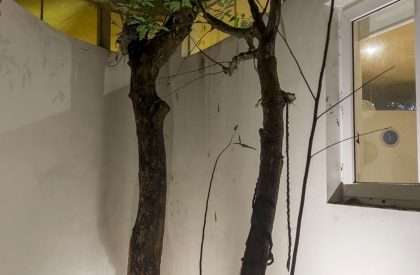Excerpt: Cloud House is a residence designed by the architectural firm NO Architects Designers and Social Artists. It is a sustainable house with a minimal footprint that upcycles various spaces, components and materials from a dilapidated structure on the site. The design retains traces of the existing home while adding new spatial volumes, satisfying the functional requirements of the users. The site is on the intermittent level of a terraced hill, sloping towards the lake shore, with access on the lower level. The site had several tropical trees that were retained as part of the new intervention.
Project Description
[Text as submitted by Architect] The project is a weekend home on Ashtamudi Lake in the tropics. It is a sustainable house with a minimal footprint that upcycles various spaces, components and materials from a dilapidated structure on the site. The design retains traces of the existing home while adding new spatial volumes, satisfying the functional requirements of the users. The site is on the intermittent level of a terraced hill, sloping towards the lake shore, with access on the lower level. The site had several tropical trees that were retained as part of the new intervention.

Différance
According to Derrida, our thinking straddles binary oppositions in language, often leading to unjustified and unhelpful privileging of one thing over the other regarding these extremities. Privileging involves a failure to see the merits and values of the supposedly lesser part of the equation. Often the crux of the matter lies in the `in between’, termed as the zone of Différance, rather than the limits. Architecture, as with any other art, is torn between binary terms, often leading to privileging. In this house, we are trying to create a permanently oscillating typology of spaces without allowing one over the other.
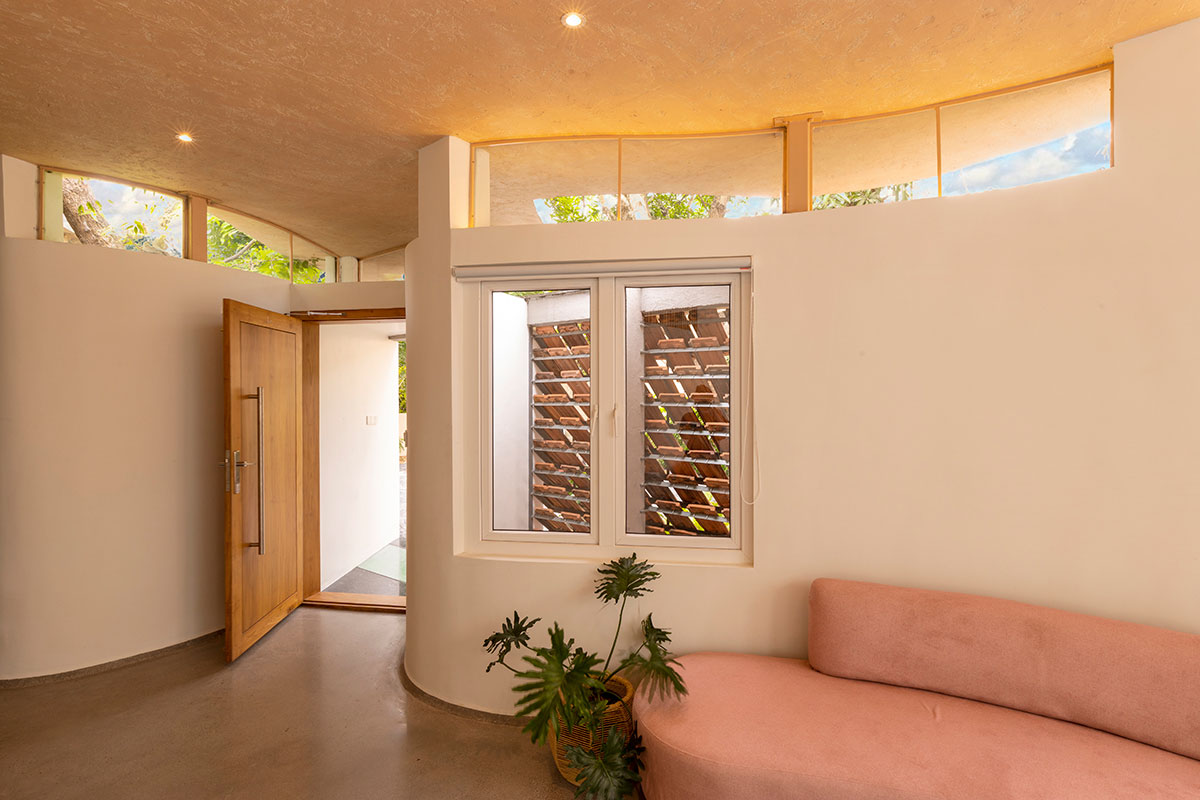
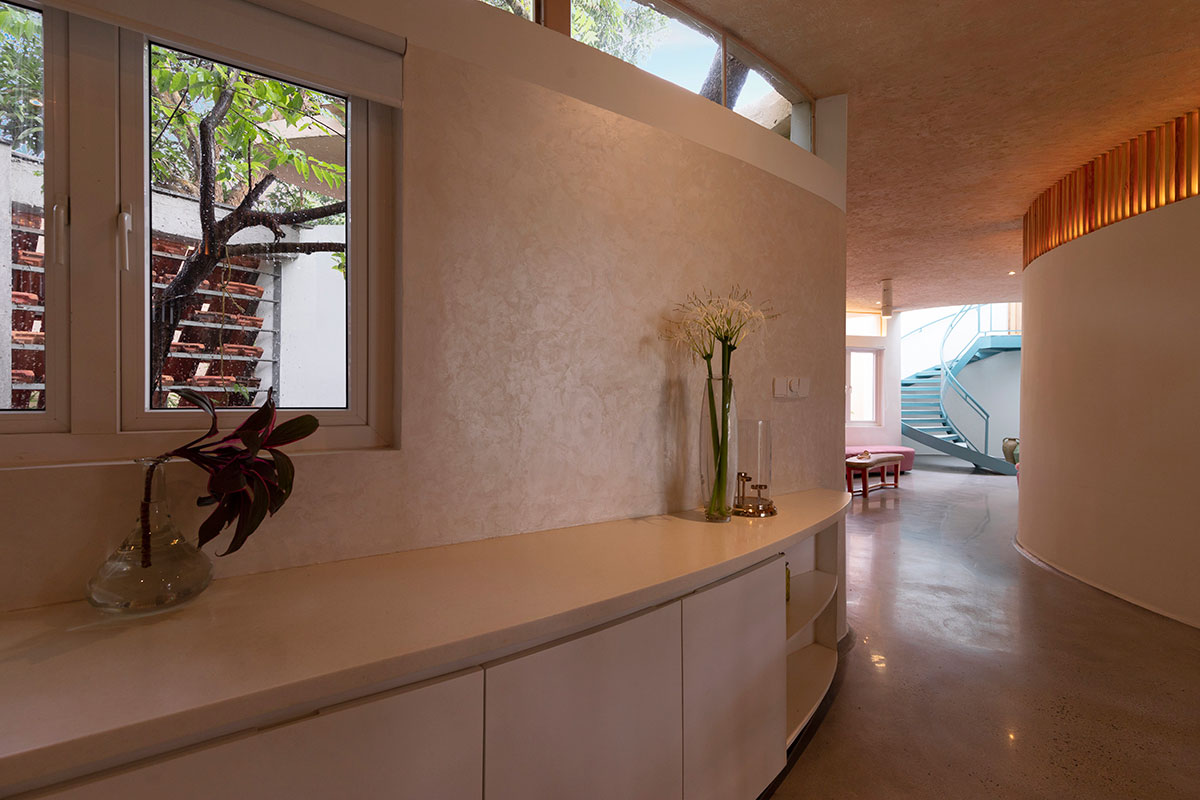
Built over nature
Grid over Fluid
Interior over exterior
Light over darkness
Rustic over Sublime
Conservation over Creation
Sky over Earth.
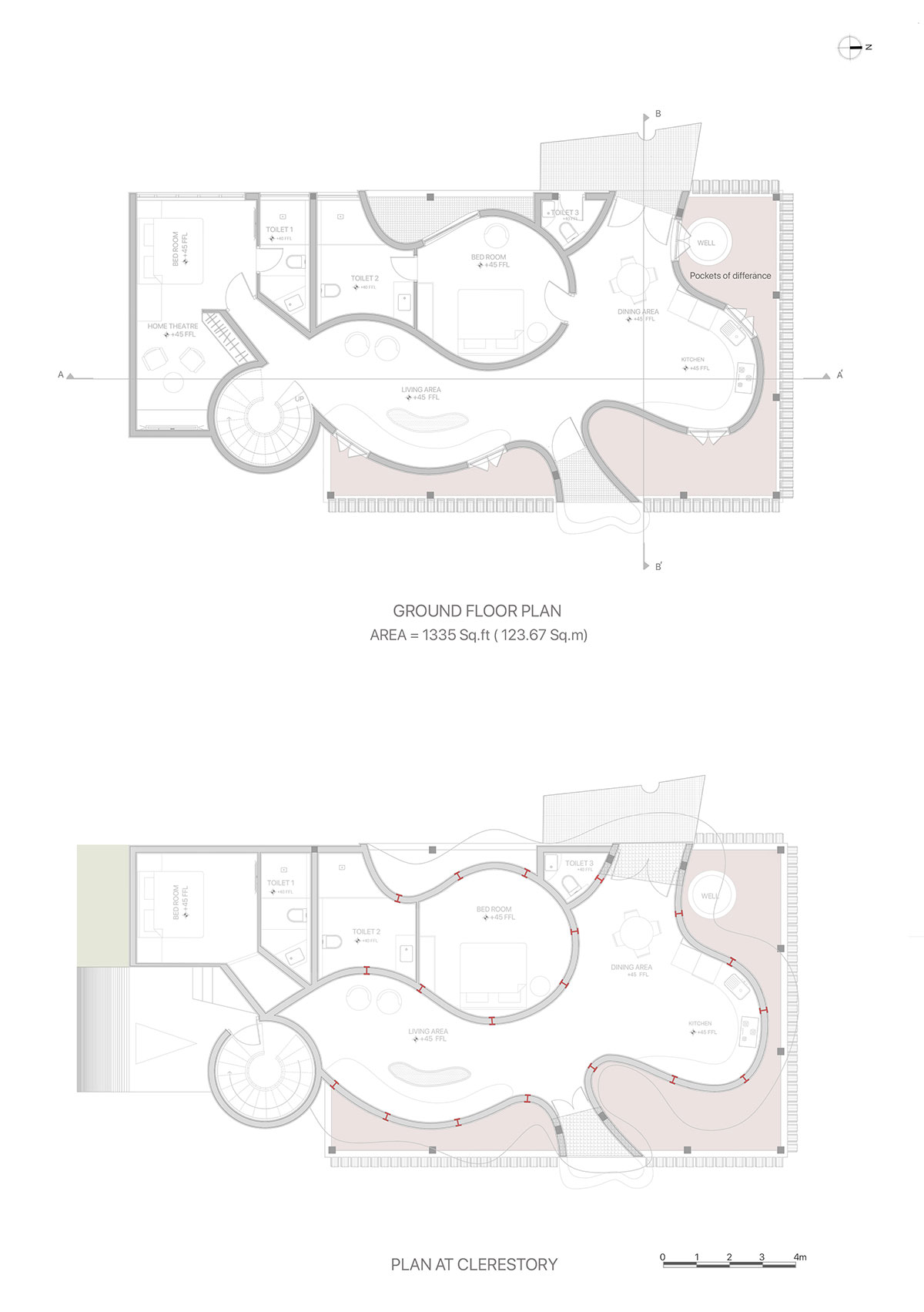
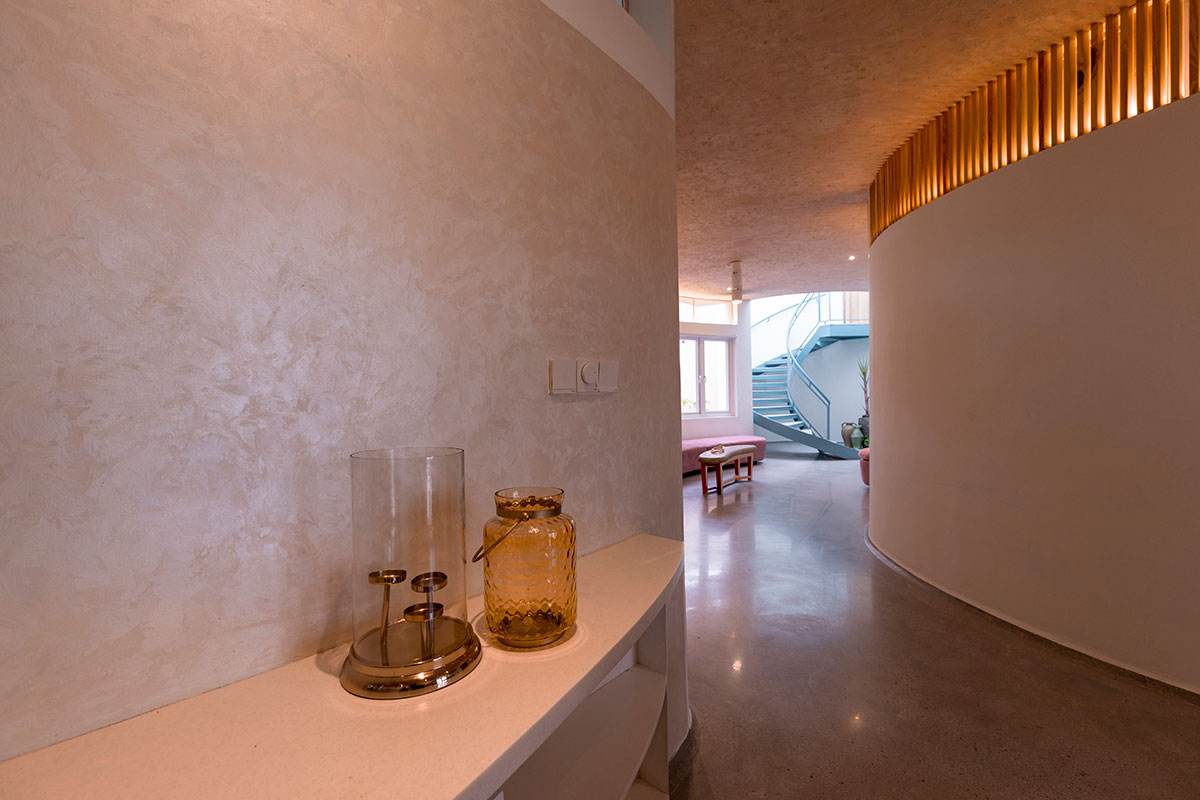
This house uses extremities of spatial vocabulary while leaving pockets of différance to mediate the meaning of the architecture. We believe that society is transitioning from the extremities of the binary opposites, like east and west, capitalist and communist, man and woman etc., to a more mature narration of the in ‘betweens’. Our architecture represents this cultural transition and re-reading of the existing structures of society.
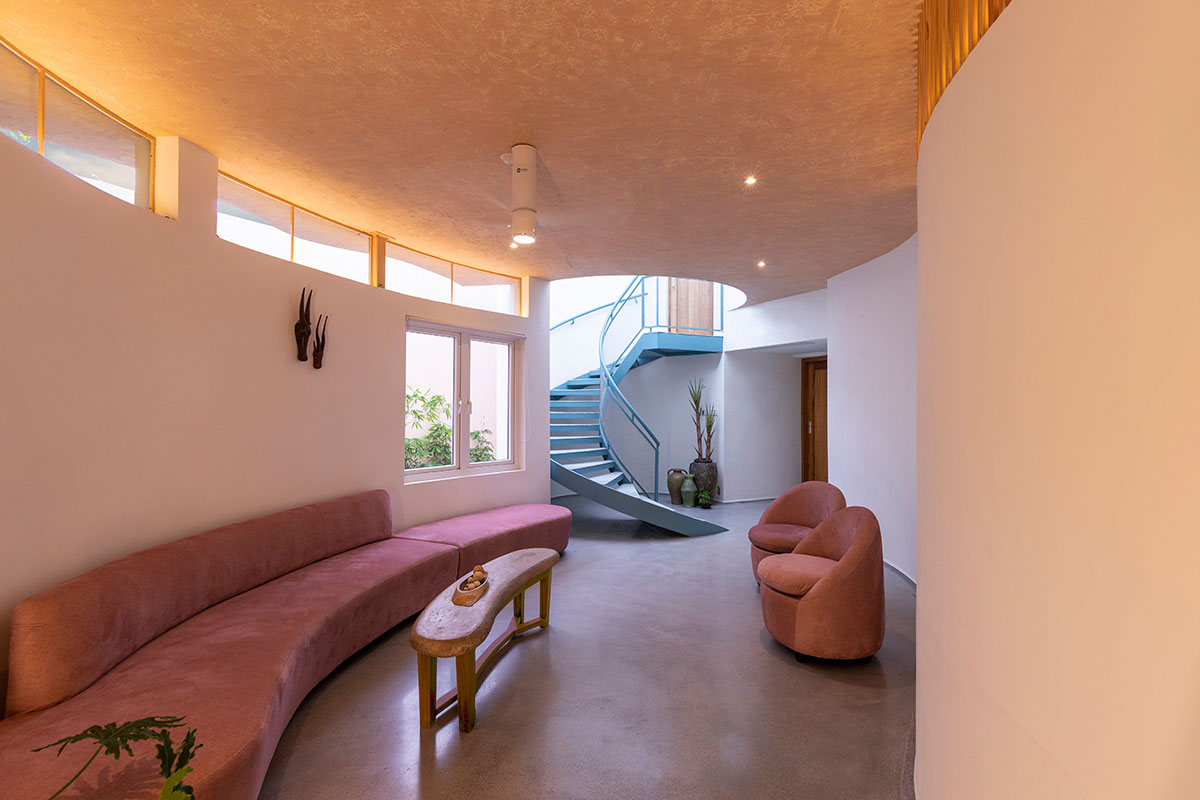
Design
After careful demolition and refurbishment of the selected areas, the structural grid was extended, and new walls were added along curved lines, saving the positions of existing trees. This resulted in fluid spaces that merged with the neighbouring volumes and nature. The newly introduced curved walls are riddled with punctures, opening into the pockets of Différance. The secondary façade that defines the architecture is perforated to `supplement’ these pockets.
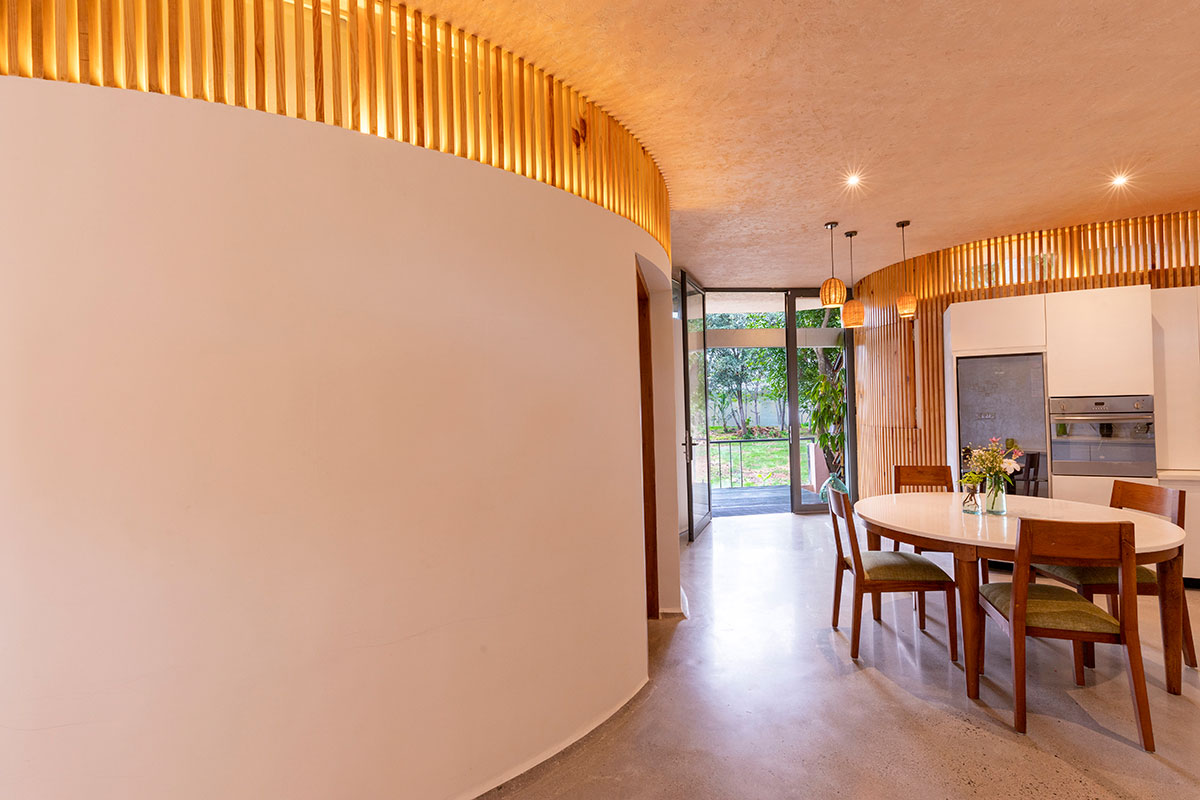

A car porch is given at the first-floor level, connected by a ramp opening up to the road on the rear side, resulting in an additional entry to the new house. A floating roof connects the freely flowing curved volumes that rest on a layer of clerestory windows, supported by I-sections. The common spaces like living, dining and the kitchen are placed along the curved spaces, opening up to a deck with views of the backwaters. One circular bedroom is placed along these curves, with an additional deck, along the water’s edge. The other bedroom follows a rectangular geometry based on the footprint of the retained walls.

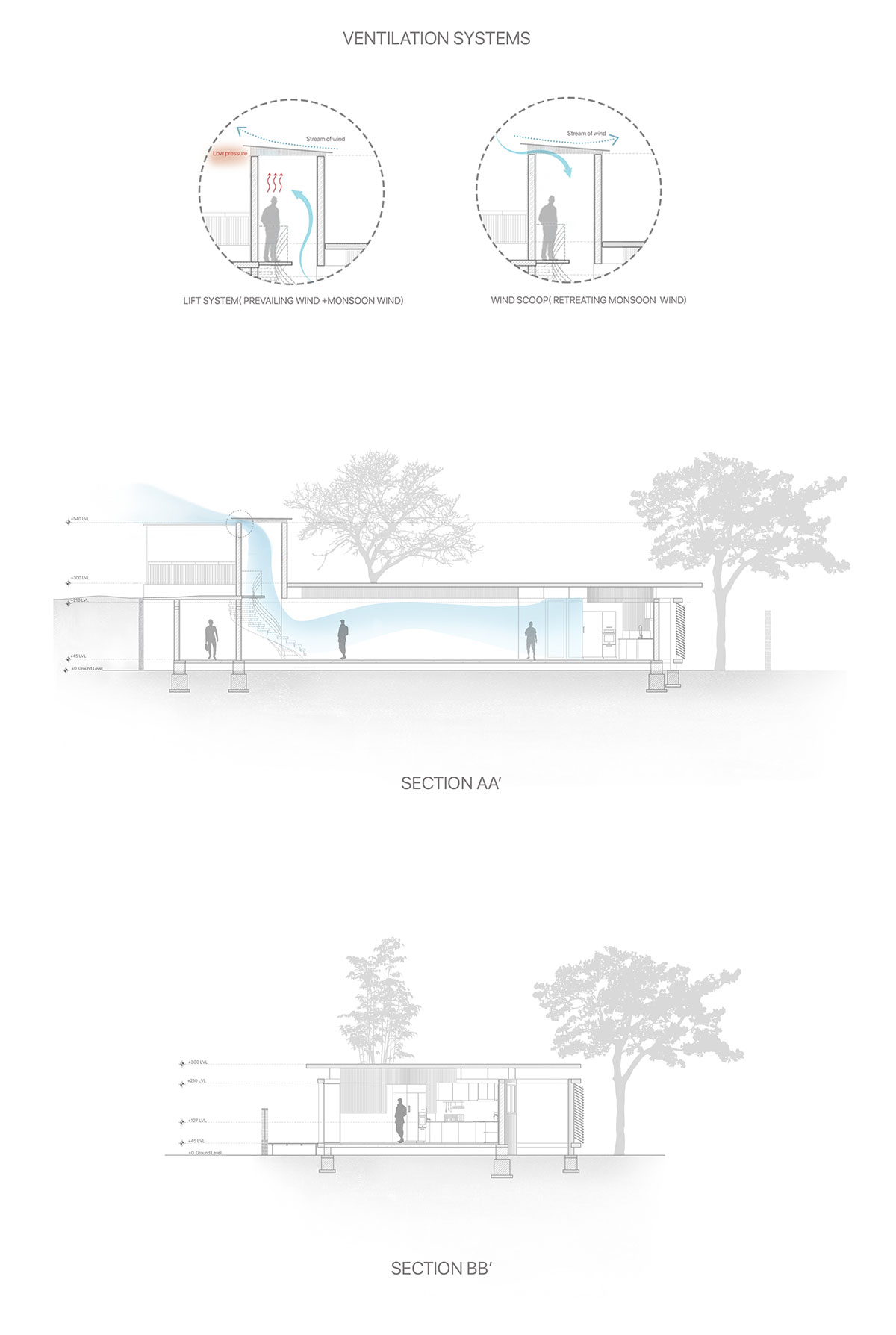
Landscape
The exterior reflects the rustic rawness of the tropics, allowing the built spaces to be camouflaged amongst the flora. Strategically placed pockets of greenery enhance the tropical vibe. Sturdy tropical plants were selected based on the form and textures of foliage, ensuring minimum maintenance for the landscape, as it is a weekend home. During the summers, the tropical fruit trees produce different mangoes, jackfruit, rose apple and many other berries, creating a food forest, and inviting birds and squirrels to this home.
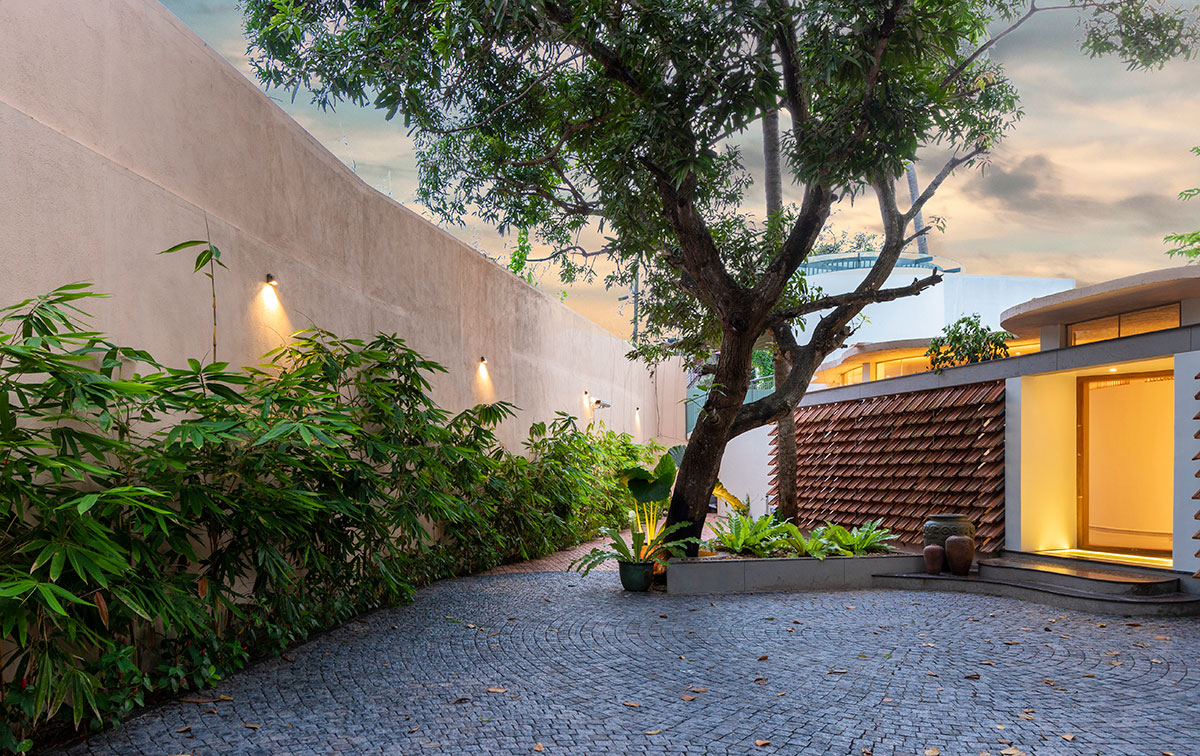
Climatic Response
Global warming is real, and it affects everything on the planet. Climate-conscious living is essential for mitigating the ill effects of climate change. This house, with a small footprint of 123.67 Sqm, is an attempt to reduce the carbon footprint, wastage of materials and overuse of energy for sustenance. It also aims to create permeable built spaces, carefully understanding the local winds, orientation and topography. Materiality and breathability of built volumes are considered two separate entities and dealt with with respect to sustainability.

Breathability
Cross Ventilation, which is required for a comfortable microclimate, was minimal due to the contoured profile of the site. The stairwell is strategically placed to attain breathability. It acts as a ventilation shaft, which collects the hot air from the interiors and emits it through a lift system when the wind blows from the lakeside. It inverses its role as a wind scoop when the calm winds blow down the slope during the retreating monsoon, creating comfortable living conditions during all seasons.
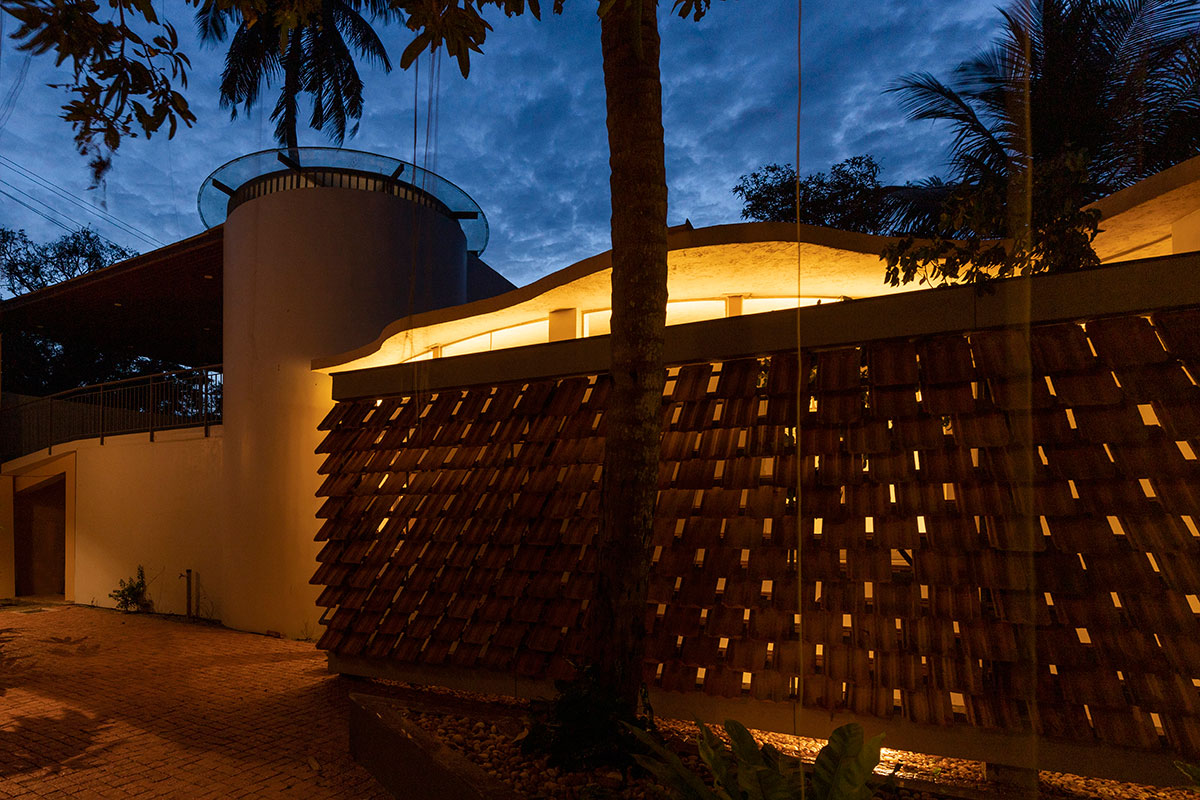
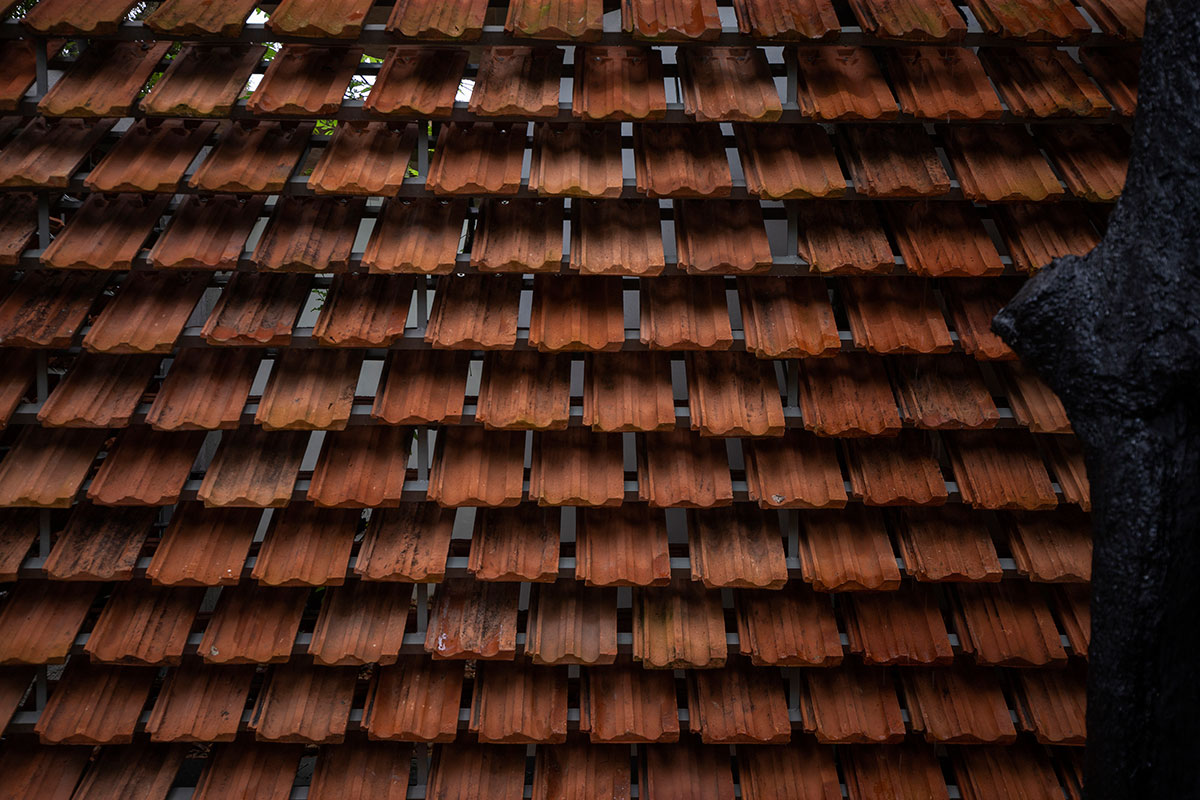
Materiality
The roofing tiles for the façade were collected from the dilapidated structure and reused. Crushed concrete chips from the demolished slabs were used in the columns of the outer façade to reduce material wastage. The polishing of the base layer for flooring helped avoid using tiles or natural stone. The horizontal members for the stairs were salvaged from the staircase of the old structure, and the frames for the car porch were upcycled from a local scrap dealer. This experimental house has widened our understanding of residential typologies, including many possibilities, often questioning the existence and being in a constant state of Aporia.

